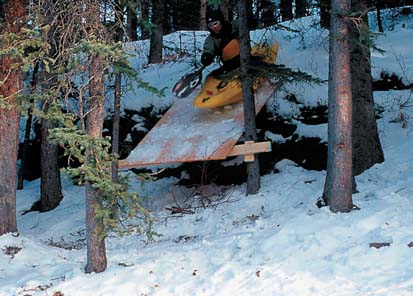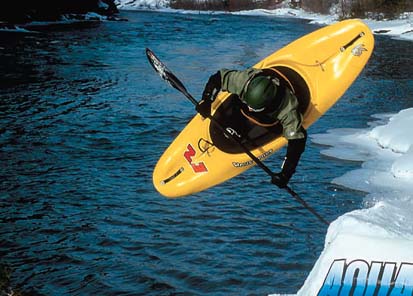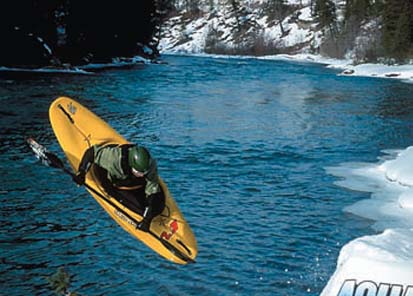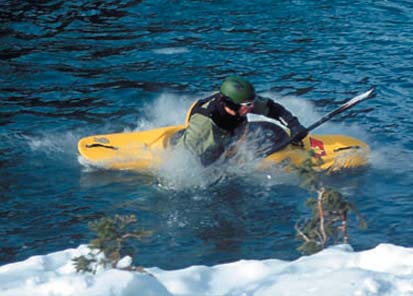A winter ramp is the latest and greatest park-and-huck idea to prove Crazy Carpets are old school. Building a ramp allows you to launch airtime and float your own corkscrew, barrel roll or double kicky, and numerous crash-and-burns. The possibilities for new ramp tricks are endless. The “whale tail” (shown here) takes aggressive body rotation, a backstroke for aerial rotation and spare time for hang time.
When building your ramp, the most important choice is location, location, location. This means choosing a good area with water depth for landing or crashing, area for the ramp and elevation for runway height and speed. Start by creating a pile of snow to mould your ramp (kicker) and in-run. You want a large pile of snow as it will settle and you have to shape and water it to make it solid. You don’t want your ramp to send you straight up, so build the ramp with a long transi- tion and not too steep. This will help send you out and over the water with speed and distance.
1Line your boat up at the top of the ramp
Line your boat up at the top of the ramp and buckle your helmet. Push off to start the in-run with speed. Focusing on your takeoff zone at the end of the ramp, and not the bow of your boat, will keep your boat on line (running straight) and ready your timing for the initiation stroke.
As you approach the takeoff, shift some body weight back and start edging your boat toward the side where you’ll be plant- ing your paddle.
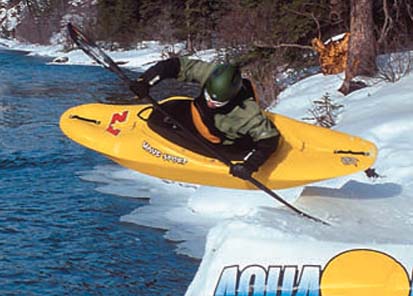
2
Wind up your torso
When the bow of your boat leaves the end of the ramp, wind up your torso (rotating your head and shoulders in the direction of desired rotation) and plant your paddle blade as a smash stroke.
3
As your boat begins to take air, sit your weight forward and use a backstroke off the end of the ramp to push your bow down with your stomach muscles and knees. This will allow you to unwind your torso and throw your hips over your head, like a wave wheel.
4
Slow your rotation
Once you are fully aired out (free from the snow), your torso should be finished rotating and in the neutral body position. Slow your rotation by pushing on your bulkhead to push the bow of your boat away from you. Now is the time to look over your shoulder and spot your landing.
5
Make sure your weight is forward
As you crash land, make sure your weight is forward and your boat isn’t completely flat. A slight edge to accept the landing helps absorb the impact on your back.
Tips
- Hurling yourself in your kayak off a jump and into the water may not provide the soft landing you think it would.
- Be prepared to take some impact. Keep your shoulders tucked in and try not to land flat hull to the water.
- Use water to firm the snow on the ramp and make sure it’s level. Bumps or uneven slope in the ramp can throw you off course. Stay straight on the approach. Use rudders if needed.
- Start with just a straight launch then build to aerial moves.
- Use enough speed to land in the water.
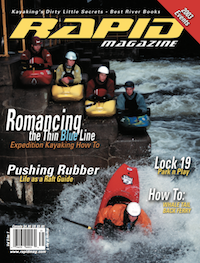
Subscribe to Paddling Magazine and get 25 years of digital magazine archives including our legacy titles: Rapid, Adventure Kayak and Canoeroots.
Photos: Ruth Gordon



